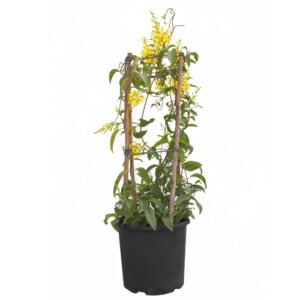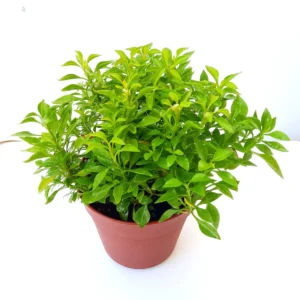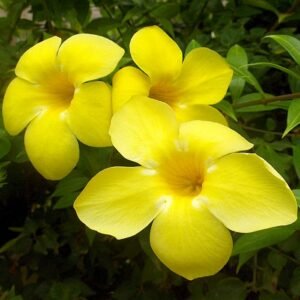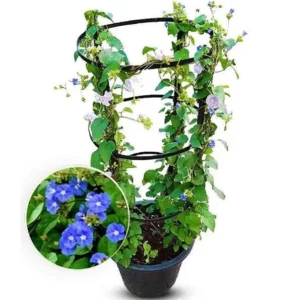| Scientific name | Clitoria ternatea |
| Common name | Butterfly Pea |
| Temperature requirement | 25-35 °C |
| Humidity | 40-50% |
| Light | Full sunlight to semi-shade |
| Watering | Water everyday &keep moist |
| Pests | Aphids and spider mites |
| Pet friendliness | Not hazardous |
| Maximum plant height | 100- 300CM |
| Potting mix | potting soil/Red soil/manure/perlite |
| Pot requirement | Good drainage&repot every 1-2 years |
| Nutrition | Apply Manure for first 15 days and NPK for next 15 days |
| Pruning & training | Remove dead & diseased leaves with sterile shears |
| Flower color & season | Dark blue flowers in June – September |
| Description | Butterfly Peas are herbaceous vines from tropical Asia. They grow dull green, compound leaves, and dangling blue flowers with yellow centres are borne mainly from June to September. It twines rapidly to about 3 metres in height given sufficient nutrients. Ideal locations are in full to partial sun where sandy, well drained soils are frequently irrigated. Pollination is carried out by bees, so the vine develops downy legumes with seeds that germinate readily. Members of the pea family Fabaceae or Leguminosae host bacteria Rhizobia within so called nodules. These are able to fix atmospheric nitrogen, making it available to the plant’s roots. Both organisms profit from this symbiotic relationship. Young plants require some initial help to start up a trellis or a fence. Butterfly Pea soon recovers from damage caused by frost and drought, and also tolerates grazing. It also does well as annual in containers, window boxes or hanging baskets. ‘Pleno’ is a cultivar with double, blue flowers. The species’ inflorescences are about 3 cm in size. Varieties such as ‘Blue Sails’ grow flowers of about 5 cm diameter. The same size but in white appears the flowering of ‘Alba’. Five petals make an interesting flower with an upright banner and two wings that enclose the boat shaped keel at the base. Apart from its use as an ornamental climber, the Butterfly Pea is a palatable forage legume and is also used medicinally for its bioactive compounds. Maintenance is relatively low for a vine, and in gulf regions the plant grows successfully. |
Additional information
| Choose Height | 50cm-60cm, 80cm-90cm, 160cm-180cm |
|---|















